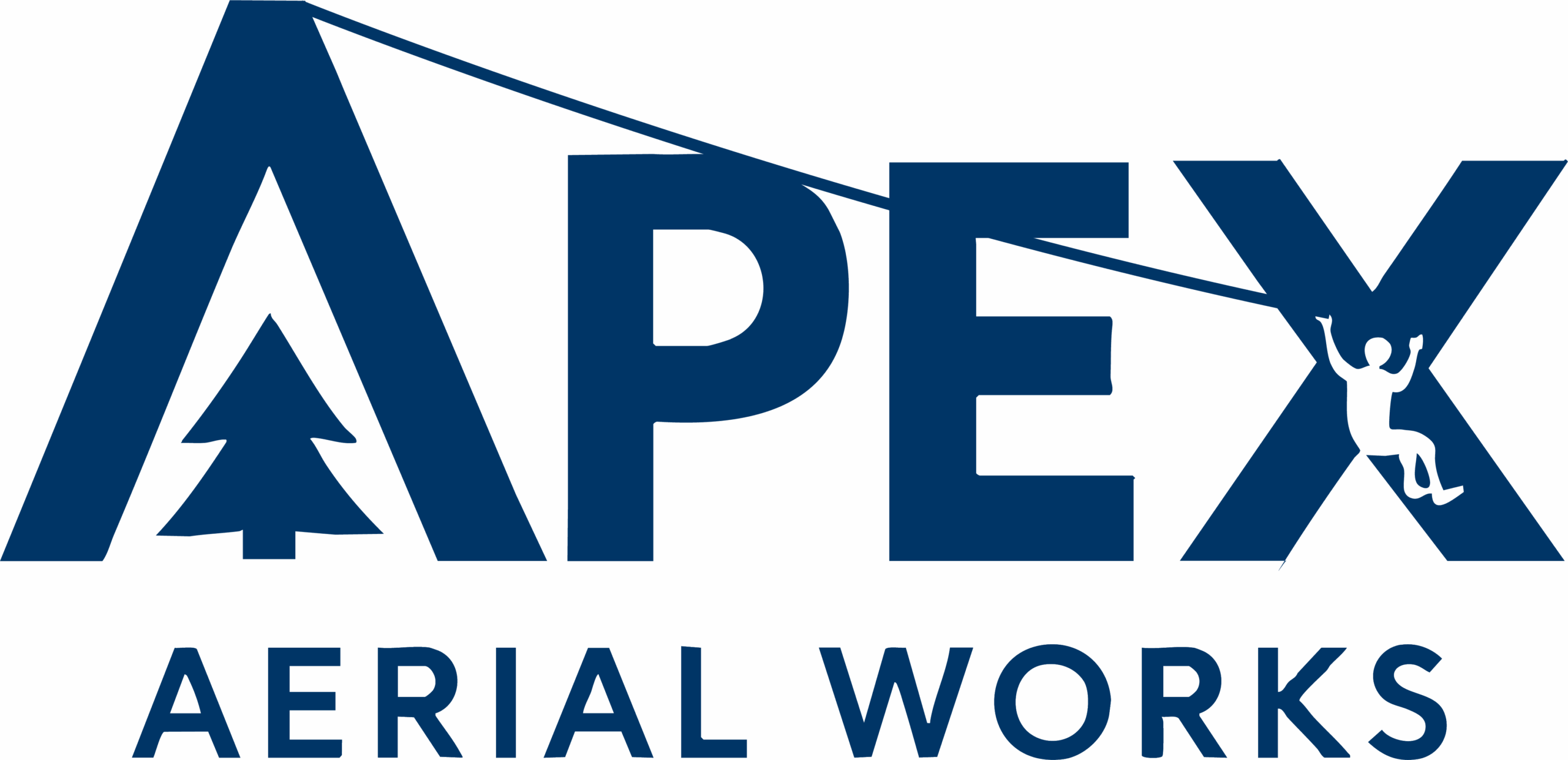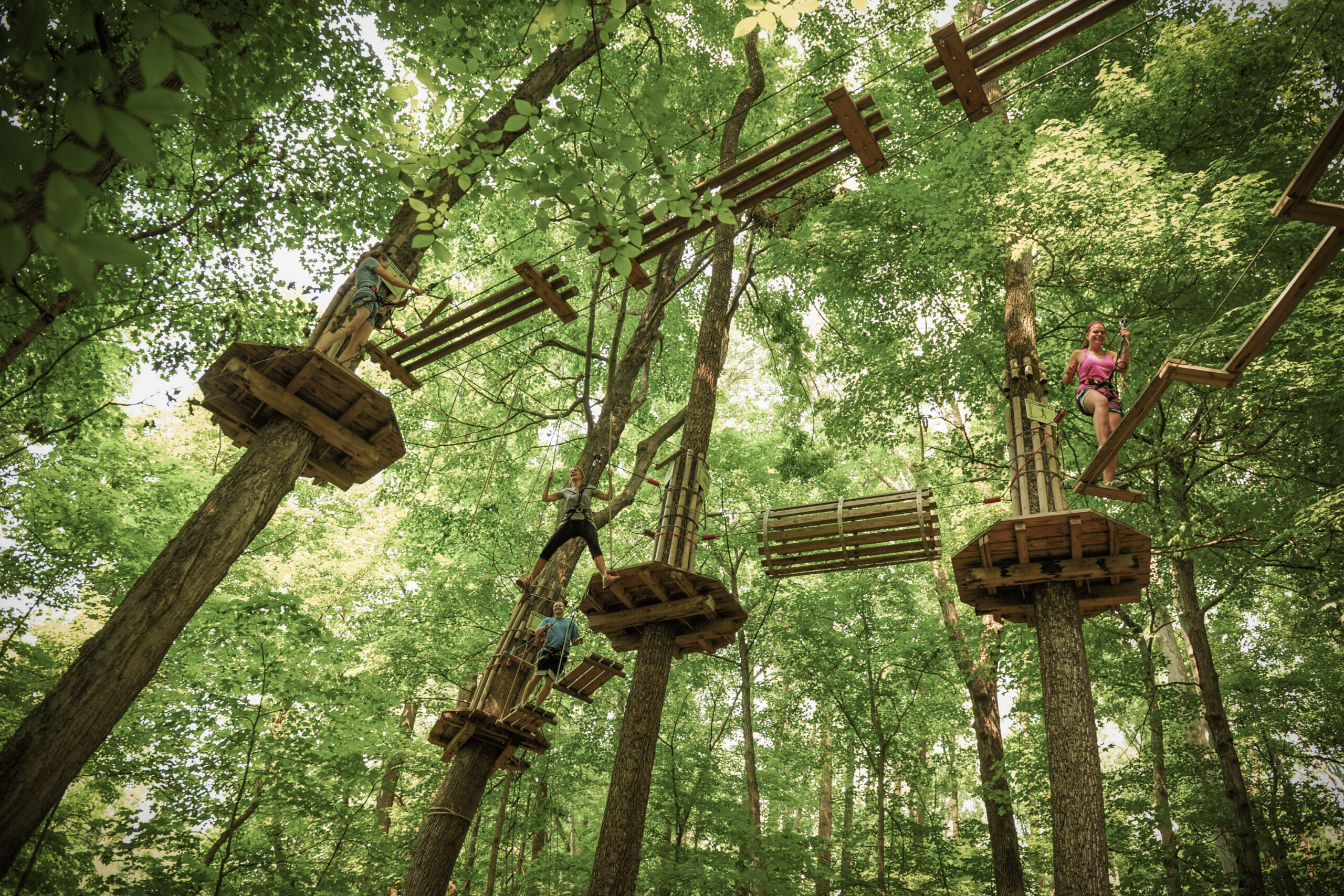Our signature attraction blends thrilling obstacles with exhilarating ziplines, creating a comprehensive aerial adventure for guests of all ages. Designed with multiple difficulty levels, these courses engage guests of all ages, encourage progression and repeat visits while maximizing guest flow.
Why Choose an Aerial Obstacle & Zipline Course?
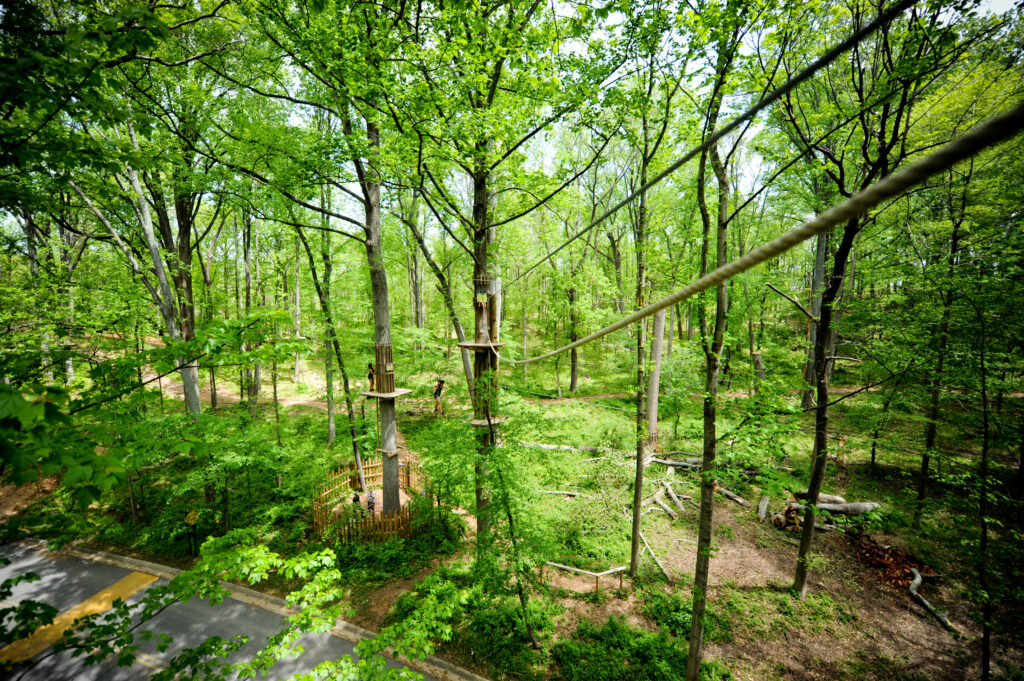
Multi-level, customizable course layouts provide challenges for beginners to advanced adventurers.
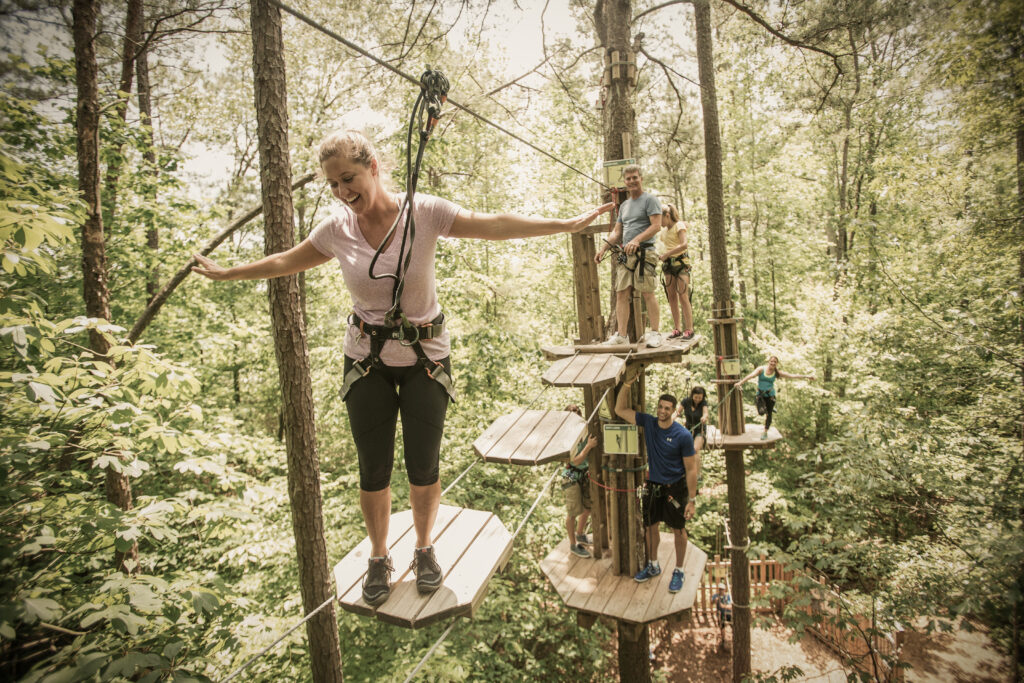
“Ski slope” style difficulty progression builds confidence, incentivizing guest returns to master the next level.
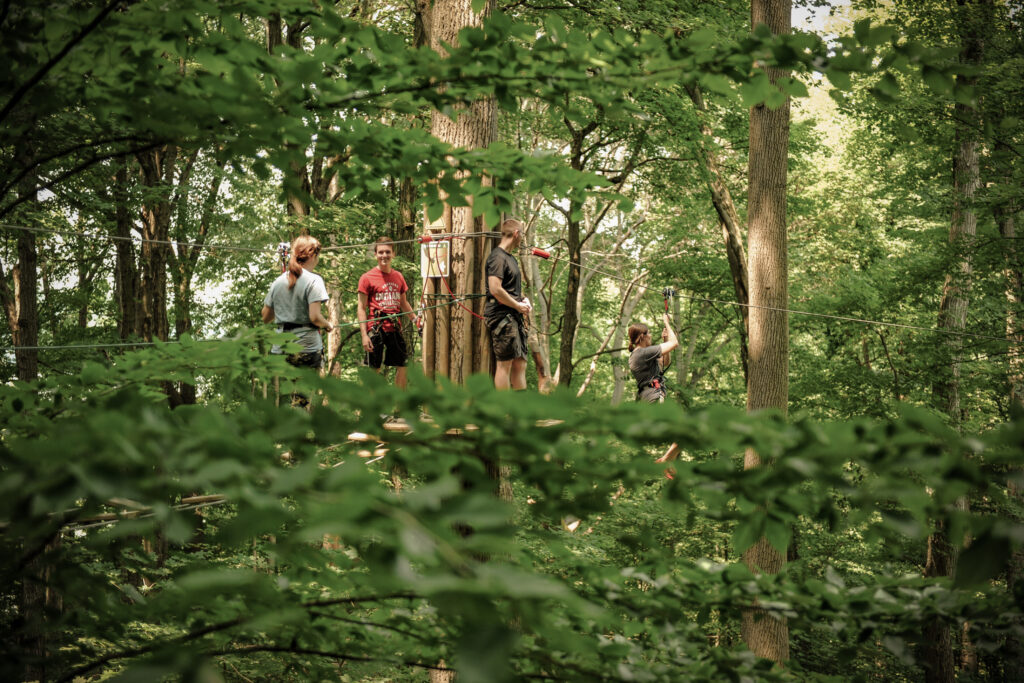
High-capacity design ideal for large groups such as schools, camps, and corporate events.
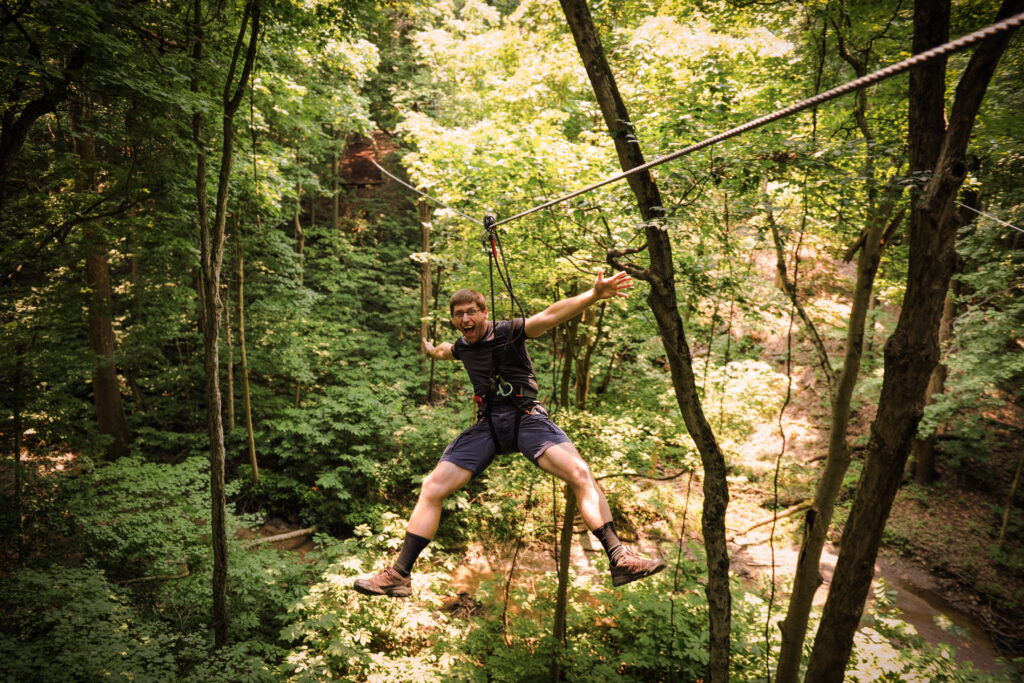
Proven ROI with scalable concepts for parks, resorts, and private destinations.
Start Designing Your Course
Customizable Options
Varying loops for a range of difficulty levels
Themed platforms or educational signage
Night operations with lighting for unforgettable after-dark experiences
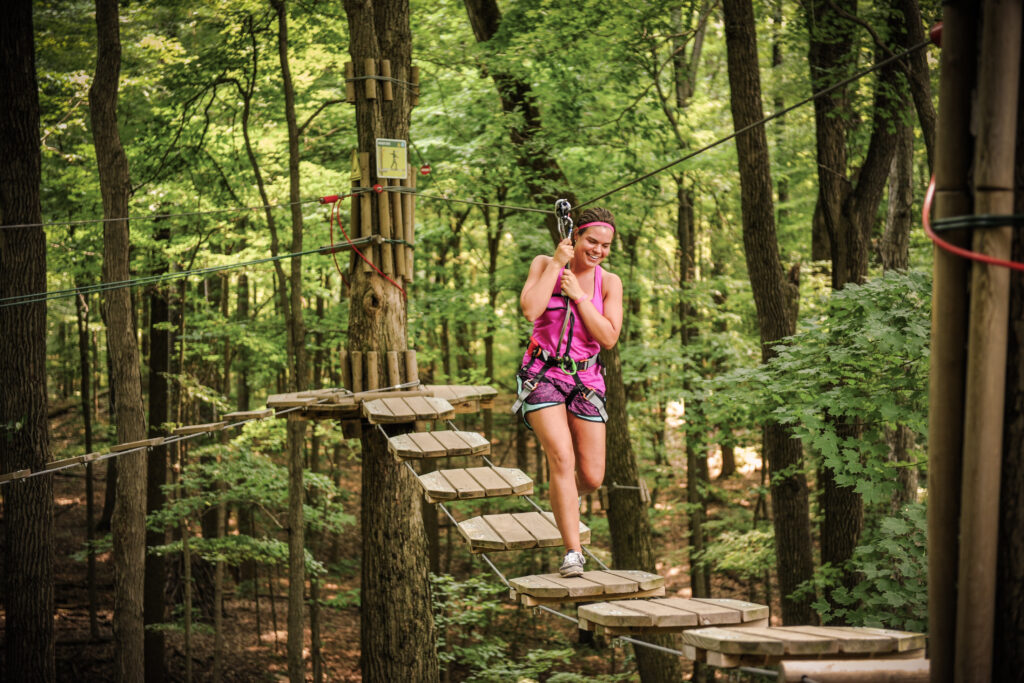
Built for Operational Success
With over 20 years as course operators ourselves, we design every element to support efficient staffing, maximize throughput, and minimize downtime. From design layouts to inspection, Apex builds with the guest experience – and your bottom line – in mind.
Start planning your custom aerial obstacle & zipline course today.
Frequently Asked Questions
What is the difference between high ropes and low ropes courses?
High ropes courses are elevated, offering thrilling challenges with harnessed safety systems, while low ropes courses are closer to the ground and focus on team-building, communication, and problem-solving.
How much space is required for an aerial obstacle and zipline course?
Space requirements vary by design. Most aerial obstacle and zipline courses require at least 1–3 acres with larger acreage recommended depending on the number of elements and whether the course is multi-level. Apex customizes each layout to make efficient use of the natural terrain. Additionally, the required acreage is primarily in the trees, allowing for continued or other uses of the same acreage on the ground.
Who are aerial obstacle and zipline courses best suited for?
These courses attract a wide range of users. Low ropes courses may be ideal for schools, camps, and corporate groups looking for structured team-building experiences or group programming. High ropes courses attract adventure-seeking families, older youth, thrill-seekers, tourists and bucket list explorers seeking memorable outdoor activities.
What safety systems are used?
All Apex courses are designed and built to ACCT standards and use modern, industry leading safety systems, including:
- Continuous belay systems that keep guests securely attached at all times.
- Harness systems and certified PPE meeting regulatory requirements
- Engineered platforms, anchors and element connections designed for durability and safety
We also provide staff training and operational guidance to ensure ongoing safety compliance.
